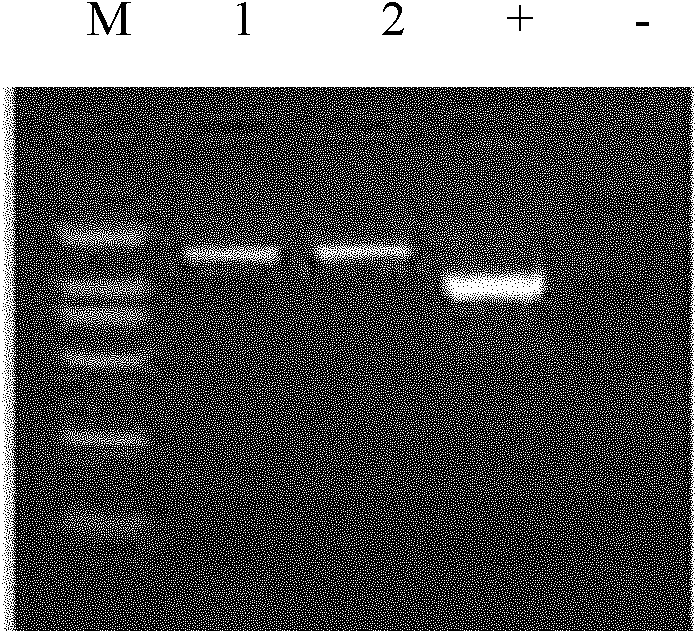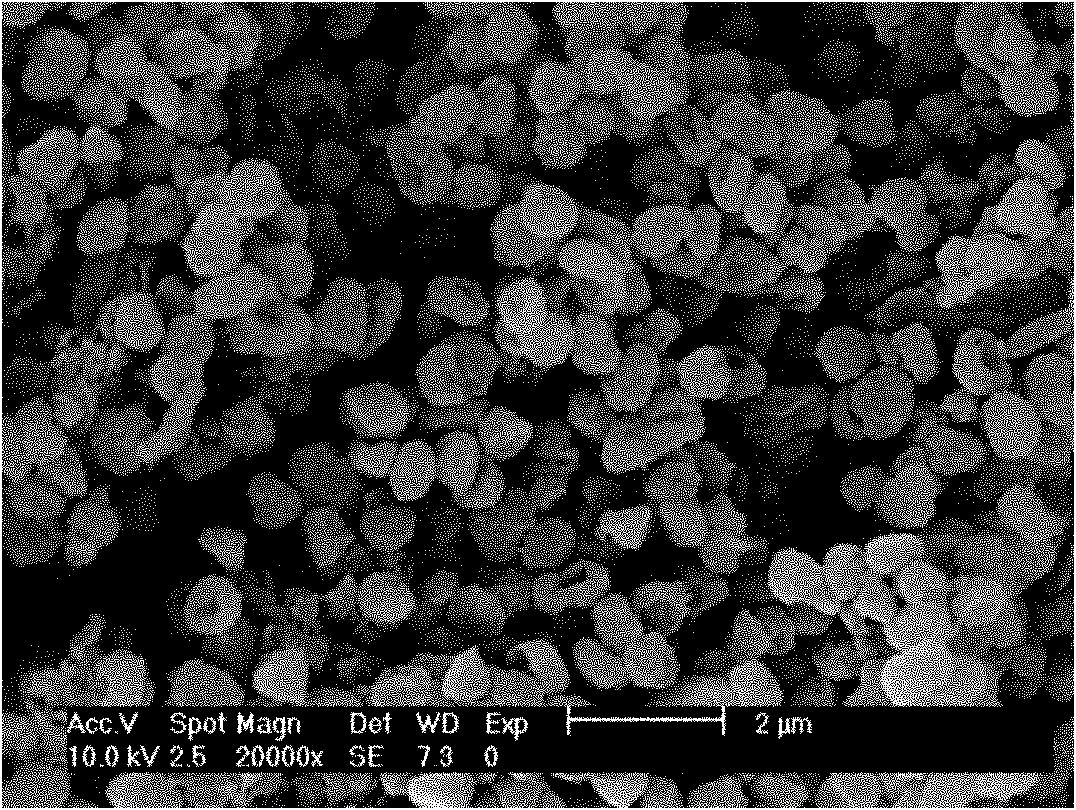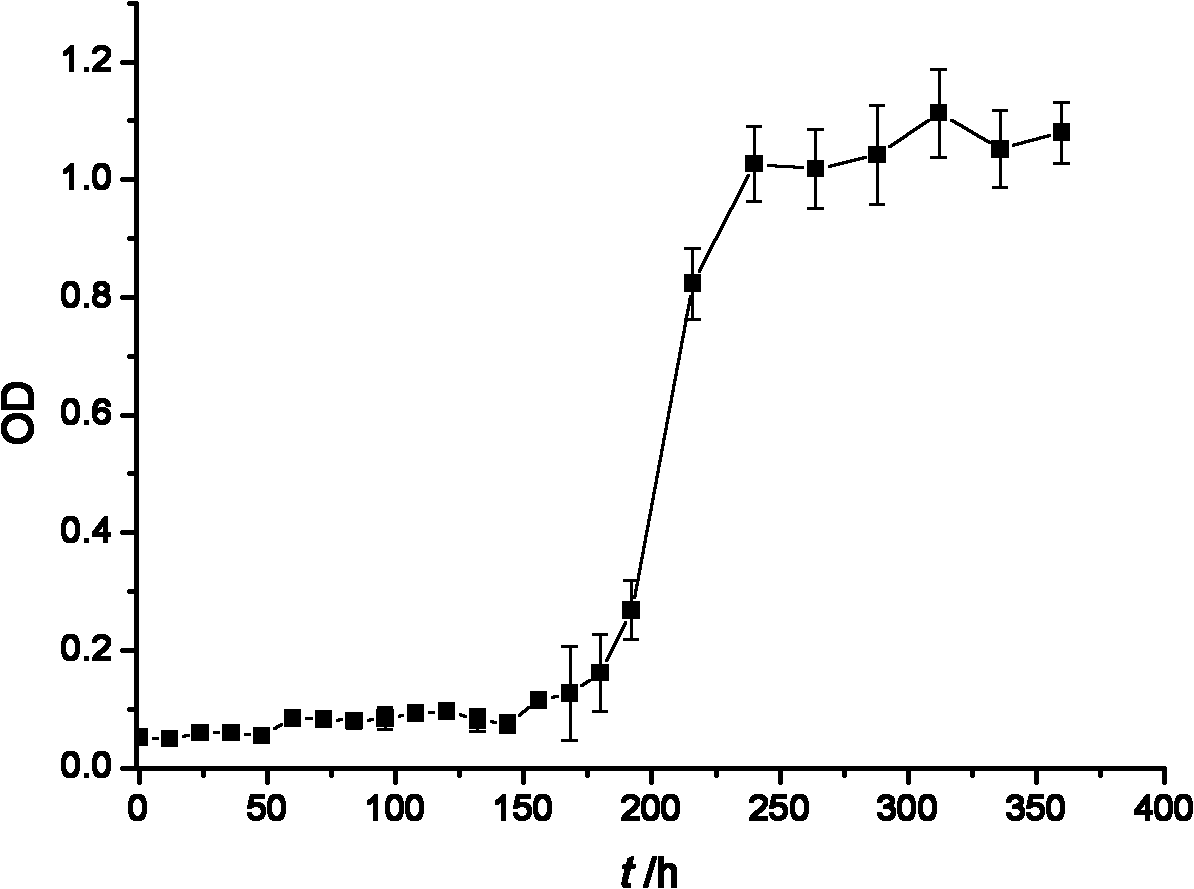Microbacterium capable of utilizing methane and applications thereof
A technology of microbacteria and methane, applied in the field of microorganisms, can solve the problems that methane organisms cannot be engineered, and achieve the effect of high methane oxidation activity
- Summary
- Abstract
- Description
- Claims
- Application Information
AI Technical Summary
Problems solved by technology
Method used
Image
Examples
Embodiment 1
[0036] Example 1 Purification and Identification of Microbacterium sp.DH
[0037] The bacterium is Gram-negative, and it spreads flat in the entire petri dish. The surface is smooth, showing a layer of yellow grease, and some have light yellow small colonies on it. The diameter of the colony is about 1mm, translucent, protruding, and the edge is smooth; Light yellow, yellow and orange, depending on the culture medium and culture conditions. Cell electron microscope scanning photo see figure 2 . The cells are short rod-shaped, with the center sunken inward, like a round basin, with an outer diameter of 0.6-0.7um and an inner diameter of 0.2-0.4um, which can produce fluorescent diffuse yellow pigment. The main physiological and biochemical characteristics of the strains are listed in Table 1.
[0038] Table 1 Physicochemical properties of Microbacterium sp.DH
[0039] Physiological and biochemical indicators
feature
Physiological and biochemical indicators ...
Embodiment 2
[0042] The growth curve of embodiment 2 strain Microbacterium sp.DH
[0043] By the growth curve of Microbacterium sp.DH strain (see image 3 ) shows that the delay period of Microbacterium sp.DH strain is longer, about 180h. However, when entering the logarithmic phase, the bacteria grew rapidly, and it took only 60 hours for the OD value to rise from 0.161 to 1.037, and then reached a plateau. The growth curve showed that the bacteria could obtain a larger concentration of bacteria with methane as the medium.
Embodiment 3
[0044] Example 3 Bacterial Strain Microbacterium sp.DH Utilizes Polycarbonate Proliferation Experiment
[0045] Use NMS medium to prepare 7 solutions of 3g / L glucose, fructose, mannose, lactose, sucrose, starch, and raffinose; take 20ml of the above 7 kinds of NMS medium and add them to a 100ml serum bottle. Take another serum bottle and add 20ml of NMS medium without adding carbon source as a control. Sterilize the above-mentioned medium by high-temperature steam at 121°C. After cooling, add 1ml of seed bacteria liquid into the bottle with a micropipette, cover the rubber stopper and shake well, put it in a shaker set at 30°C and 160 rpm / min conditions for 3 to 5 days. Then measure the OD of the bacterial solution 560nm Then take about 1.2ml of bacterial liquid and centrifuge at high speed, and then take the supernatant to detect the sugar concentration by the sulfate anthrone method to determine the consumption of carbon source. The results are shown in Table 2. All car...
PUM
 Login to View More
Login to View More Abstract
Description
Claims
Application Information
 Login to View More
Login to View More - R&D
- Intellectual Property
- Life Sciences
- Materials
- Tech Scout
- Unparalleled Data Quality
- Higher Quality Content
- 60% Fewer Hallucinations
Browse by: Latest US Patents, China's latest patents, Technical Efficacy Thesaurus, Application Domain, Technology Topic, Popular Technical Reports.
© 2025 PatSnap. All rights reserved.Legal|Privacy policy|Modern Slavery Act Transparency Statement|Sitemap|About US| Contact US: help@patsnap.com



